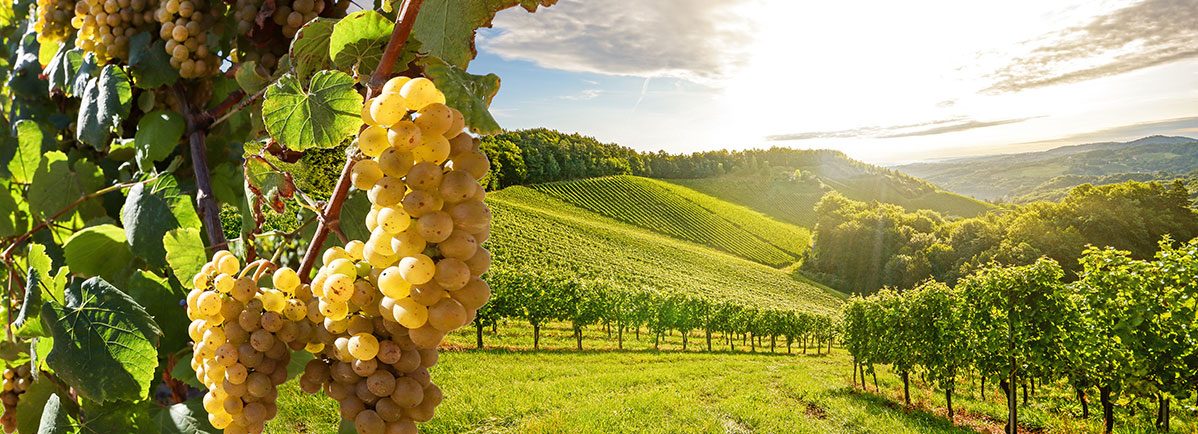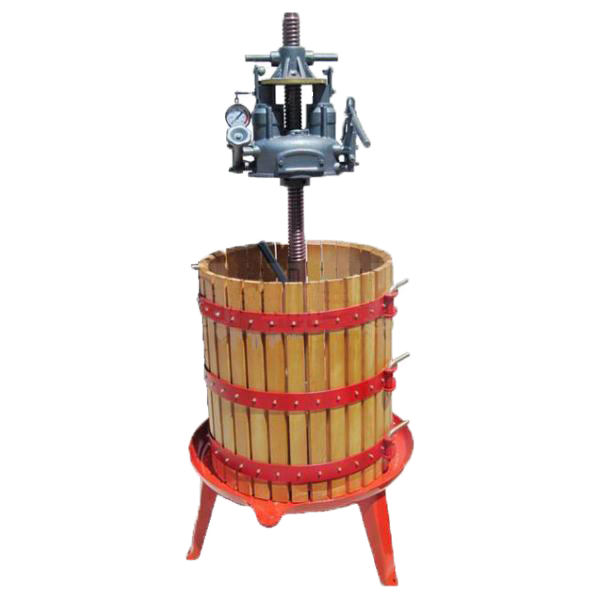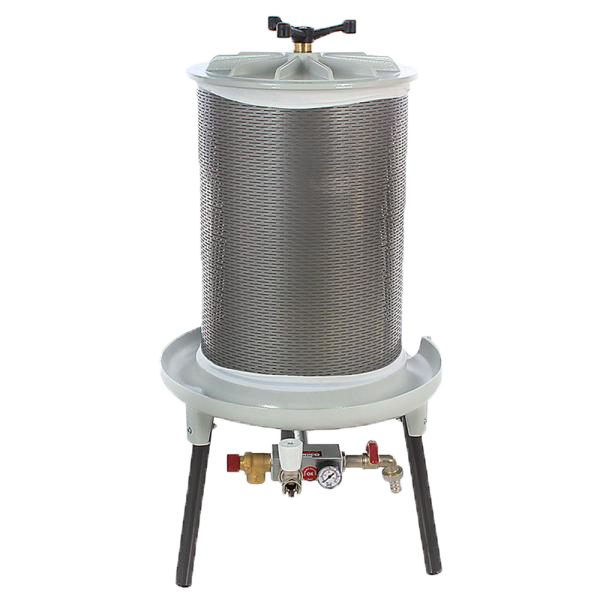A comprehensive guide to buying the best grape press, with all its features.
The Complete Guide to help you choose the Best Wine Grape Press
by the Real Experts of Wine Making Equipment
This guide is for all the wine-growing enthusiasts, the true protagonists of the wine-making process.
What makes a big difference in national wine production are not only the large wine cellars where systematic processing of the product takes place, but also the many small local producers, entrepreneurs and wine making lovers.
The world of wine-growing encompasses many types of machinery that represent the flagship of Italian technology and specialisation in this field.
The wine grape press is undoubtedly the most prominent among the equipment used in oenology, wine production and throughout the grape harvest period.
The purpose of this purchasing guide is to help you choose the best wine making equipment, giving you some useful advice on the purchase of the wine press that best suits your needs.
CONTENTS
1. The wine grape press
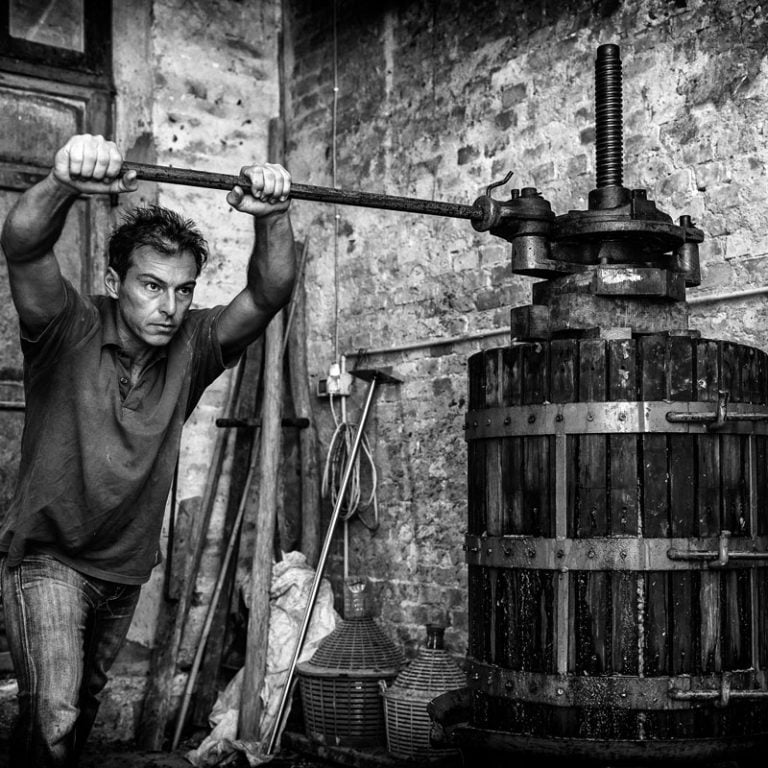

The wine grape press is a fundamental tool for wine production.
Generally, the wine press is used in “the third phase”, which starts after grape harvest and destemming. In the collective imaginary, when it comes to the wine-making process, one immediately thinks of a cellar furnished with a grape wine press in the middle of it.
This is not only because it is the basic equipment without which there would be no wine production, but also because it is the oldest of all tools related to the wine making process. The physical basis behind this piece of machinery has remained unchanged over the centuries: exerting strong pressure on the grapes in a uniform manner to ensure an abundant yield.
Before being pressed and crushed, the grapes must be squeezed and cleaned from the stalks using a destemmer. Once this process is complete, the grapes are poured into the wine press which will process them by applying pressure thanks to the upper threaded shaft.
The lead screw nut unit presses on two wooden half discs placed as a cover. This is screwed along a threaded shaft and allows the grape juice to flow and be collected in the external basin.
The wine grape press is used for the production of red wine and for processing white grapes, but it is not intended for the production of sparkling wine or rosé wine.
Depending on the characteristics and specific requirements, the wine press is equally suitable for small wine-making amateurs and professionals. There are different models of wine grape presses on the market that have more or less the same operating mode, but differ from each other for some technical and structural characteristics that affect the quantity of grapes to be processed and the amount of wine produced
2. The structure
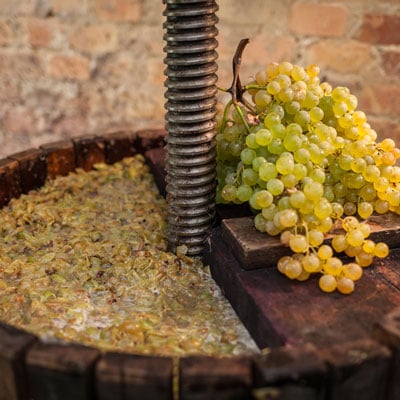
The wine grape press consists first of all of a base, which is generally made of cast iron, but can also be made of wood or granite. This base has a hole in the centre, inside which there is a hydraulic jack and a threaded shaft that turns to apply pressure. The external structure that acts as a cage is made with wooden slats. The type of wood of the external cage is very important; usually oak or beechwood is used, which, as well as being very resistant woods, are chosen because they do not affect the taste, smell and organoleptic level of the grapes with which they come into contact. The oak slats are placed at a distance from each other and are fixed with iron hoops and bolts. Inside the wooden cage (or metal frame, if present), the wine grape press is divided into two parts:
- In the upper part there is the lead screw nut unit: this is the lead screw through which the pressing function is generated with the force exerted on the threaded shaft.
- In the lower part, the grapes and grape pomace are
crushed and pressed evenly so that the juice produced flows out.
3. The different types of wine grape press
There are four main types of wine presses:
- 1-Speed manual wine grape presses
- 2-Speed manual wine grape presses
- Hydraulic wine grape presses
- Hydropresses

One feature the wine grape presses immediately stand out for is undoubtedly the diameter of the cage. The diameter of the wine press obviously determines its size, the output capacity and therefore also the product level, hobby or professional. Heavy-duty wine grape presses are larger than hobby-use models, featuring a larger outer diameter of the cage.
3.1 1-Speed manual wine grape presses
1-Speed manual wine grape presses are the smallest types in the category, they are considered standard presses and can be operated via a mechanical ratchet movement. They are characterized by a single pawl. The pawl has a triangular base and serves the function of anchoring the wine press when the threaded shaft rotates. These wine presses come with a basin and threaded screw in high resistance steel, slats in evaporated beechwood or oak fixed with bolts. They are equipped with six wooden pieces and two half discs. This type of wine grape presses is suitable for limited wine productions and for hobby use. The wine presses in this category range from a cage diameter of 15 cm to a maximum of 35 cm.
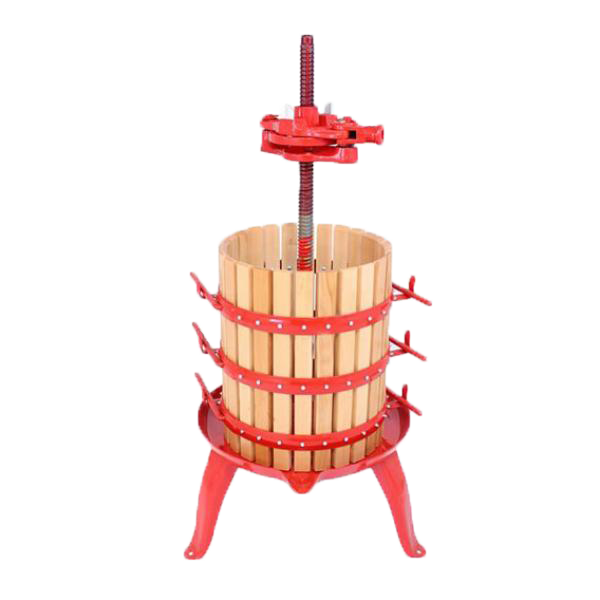
3.2 2-Speed manual wine grape presses
2-Speed manual wine grape presses are larger than the previous models but they are also operated manually via a mechanical ratchet movement. They are standard models of wine presses that are suitable for wine productions slightly larger than 1-speed types and are recommended for hobby and semi-professional use. The design and structure of these wine grape presses are the same as the single-speed wine presses; the difference lies in the presence of two openings for the pawl, one external and one internal. This allows the operator to choose the pressure that can be applied between wine-making sessions. 2-Speed wine presses feature a cage diameter that goes from 40 to 50 cm and are intended for a wine production between 70 and 130 liters.
| Internal diameter in cm | Grape pomace capacity in lt |
| 40 | 69 |
| 44 | 80 |
| 45 | 95 |
| 50 | 127 |
3.3 Hydraulic wine grape press
Hydraulic wine grape presses are the last type of grape presses in this classification.
They differ significantly from the other two types of wine grape presses. The hydraulic models allow greater pressure to be applied with less effort. This makes it possible to achieve larger productions in a shorter period of time, this is why they are set at a higher level of quality and performance and are undoubtedly more professional. The most popular variants on the market are those with a 50 cm cage diameter (for medium domestic productions), those with a 60 cm of cage diameter for medium to large wine productions, up to machines with cage diameters of 70 cm.
| Internal diameter in cm | Grape pomace capacity in lt |
| 50 | 127 |
| 60 | 210 |
| 70 | 330 |
The hydraulic jacks with which they are fitted are made of cast iron and feature a pressure gauge, they are able to exert pressures of up to 400 bar. Thanks to this hydraulic system, all you need to do is pull the lever to lower the upper part and squeeze the grapes with great force and little effort. These models can ensure up to 200 liters of wine productions.
3.4 Hydropresses
Hydropresses are professional tools, effective and easy to use. These machines are based on an innovative system that uses water pressure to squeeze the material. They are an ideal solution for processing grapes, apples and fruit in general, for quick and easy production of must, cider, juices and much more. They provide a very high yield. Unlike pneumatic wine grape presses, hydropresses exploit the water pressure. The membrane that swells presses the shredded fruit against the sides of the cage, thus extracting all the juices. All materials used are suitable for food processing in accordance with applicable European directives. The cage is in stainless steel, as well as all the internal components of the machine, while the lid and the base are made of sturdy and durable aluminium. It does not require any maintenance: after each use, just wash thoroughly with water and store in a room not exposed to sunlight.
4. One last piece of advice
Now that you have reached this point in this guide, you should have a much clearer idea of how to choose the best wine grape press for your needs; however, do not forget that a successful wine production is also closely linked to the cleaning of the machinery.
Good wine cannot be made without thorough cleaning of the equipment used. For this reason, we also recommend a high-pressure pressure washer in combination with a wine grape press: the grape press must be thoroughly washed every time it is used to prevent the processed product from being altered by other substances. We therefore refer to our purchasing guide on Cold Water Pressure Washers.



